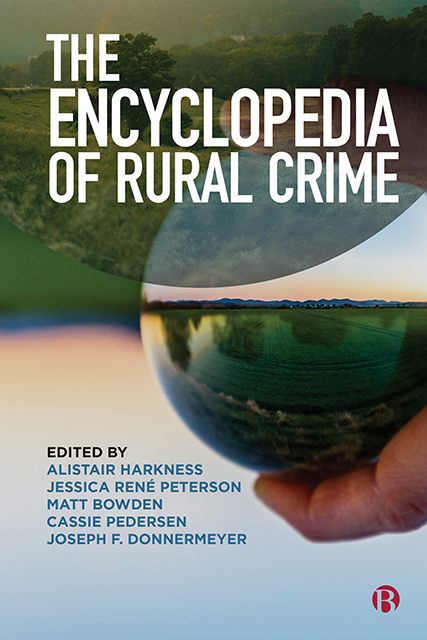Book contents
51 - Reassurance Policing in Rural Communities
Published online by Cambridge University Press: 20 June 2023
Summary
Reassurance policing remains an important visible policing strategy that can address the increasing disconnect between police and community created by more abstract forms of ‘high’ policing. Reassurance policing was conceptualized by Bahn (1974) who argued that increased visibility of police officers in the community can increase public feelings of security and safety. Early conceptualizations of reassurance policing described the importance of the police being visible, familiar and accessible.
The driver of this strategy was the identification of the ‘reassurance gap’, which describes the objective increase of safety through decreasing crime rates whilst fear of crime increases or stays the same due to an increased distance between police and the public (refer to Innes in the suggested readings). Identifying the reassurance gap has been key to realizing the limits of the crime management approach to policing which had, prior to reassurance policing, developed as the gold standard of professional policing.
Innes expands on earlier conceptualizations and argues that reassurance policing consists of three elements: (i) recognizing the performative act of policing by offering a visible presence in the community; (ii) using the signal crimes perspective to address the crimes and acts of disorder that are linked to feelings of insecurity in the community; and (iii) promoting the co-production of security by recognizing the role of the public in providing informal social control and the support from partner agencies, coordinated and guided by the police.
The focus on identifying and addressing crimes with ‘signal values’ attached to them is called the ‘signal crimes perspective’ and has been a crucial part in the development of reassurance policing. Some crimes (and here Innes and Fielding, 2002 is informative) have more ‘signal value’ attached to them than others and these can have a disproportionate impact on feelings of security. These could be both serious acts of violence or, as is often the case in rural communities, smaller acts of disorder that disrupt daily routines.
So far, little attention has been paid to the impact and value of reassurance policing for rural communities. This is despite the fact that reassurance policing is ideally placed as a policing strategy for rural communities due to its appreciation of informal policing mechanisms and the traditionally closer relationships between the police and rural communities.
- Type
- Chapter
- Information
- The Encyclopedia of Rural Crime , pp. 205 - 207Publisher: Bristol University PressPrint publication year: 2022



